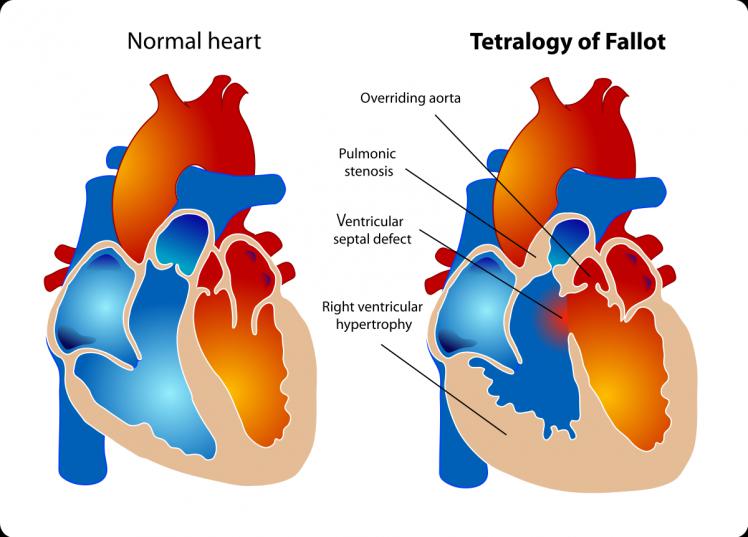Tetralogy of Fallout (TOF)
Tetralogy of Fallout (TOF)
Tetralogy of Fallout (TOF)
Tetralogy of Fallot (TOF)
Tetralogy of Fallot is a congenital (present at birth) heart defect. In tetralogy of Fallot (TOF), four related heart defects change the way blood flows to the lungs and through the heart.
TOF is repaired through open-heart surgery soon after birth or later in infancy. Some infants need more than one heart surgery.
* Most babies who are treated do very well, but will need regular follow-up visits with a heart specialist.
What are the Signs of TOF?
• A bluish coloration of the skin caused by blood low in oxygen (cyanosis)
• Heart Murmur
• Fussiness
• Tiring Easily
• Difficulty Breathing
• Rapid Heartbeat (palpitations)
• Fainting
• Clubbing of fingers and toes (an abnormal, rounded shape of the nail bed)
• Poor Weight Gain
Diagnosis
• Echo
• ECG
• Chest X-ray
• Oxygen level measurement (Pulse oximetry)
• Cardiac Catheterization
Treatment/Surgery
Doctors repair tetralogy of Fallot through open-heart surgery soon after birth or later in infancy, depending on the baby's health and weight and severity of defects and symptoms.
There are two Surgical Options:
1. Complete Repair: The Surgeon will repair all defects in One Surgery and will not any second procedure.
2. Temporary or palliative surgery: Minor repairs can improve blood flow to the lungs. This usually is done only when a baby is too weak or small to have full surgery.
In this procedure, the surgeon creates a bypass (shunt) between a large artery that branches off from the aorta and the pulmonary artery.
The full repair is done later when the baby is ready for complete repair & grows stronger.
Complications after surgery

